HACKED ransomware / virus (Free Instructions) - Virus Decryption
HACKED virus Removal Guide
What is HACKED ransomware virus?
HACKED virus – a Jigsaw version that returns in a new form
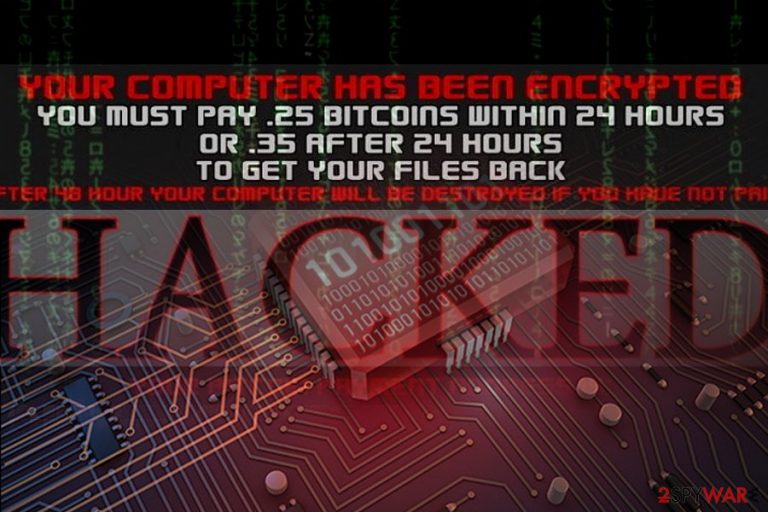
HACKED virus originates from Jigsaw ransomware family. In December 2016, it came as a screenlocker and appending file extensions. As you may already know, it is not the first time Jigsaw developers are trying their luck with new ransomware versions. CryptoHitman virus, Payransom virus, and Payms virus are just a few variants of the virus that the malware analysts have discovered.
Recently, malware researchers have identified its latest version which adds .hacked file extension to the affected data. Interestingly, the malware also presents several ransom notes in different languages: Italian[1], English, Spanish, and Turkish.
The ransom note differs depending on the language, e.g. @readme_English.txt[2]. Unfortunately, the developers managed to wrap the malware in a disguise of Windows update. If you suspect the presence of this malware, make a rush to remove HACKED ransomware.
| Name | HACKED ransomware |
|---|---|
| Type | Ransomware, data locking malware |
| Malware family | Jigsaw |
| File extension | .hacked |
| Ransom note | Is delivered in a different language |
| File Recovery | If no backups are available, recovering data is almost impossible. Nonetheless, we suggest you try the alternative methods that could help you in some cases – we list them below |
| Malware removal | Perform a full system scan with powerful security software |
| System fix | Malware can seriously tamper with Windows systems, causing errors, crashes, lag, and other stability issues after it is terminated. To remediate the OS and avoid its reinstallation, we recommend scanning it with the FortectIntego repair tool |
How the original version works
It turns out that this new variant of the virus has been obfuscated via AutoIt – a free Windows scripting tool [3]. The first traces of the malware were detected before December last year. Since then, the malware has been changing its veneer — lock screen images and payment GUI. Here is an extract from a prevalent version of the virus.
Your computer has been encrypted
You must pay .25 Bitcoins within 24 hours
Or .35 after 24 hours
To get your files back
After 48 hour your computer will be destroyed if you have not paid
HACKED
Your Bitcoin payment address is:
[Bitcoin_payment_address]
As you can see, the developers have become extensively more aggressive, putting the victim under deadlines and threatening to “destroy” not only the encrypted computer files but the device itself. The hackers don’t go into much detail about how this payment should be issued and how the decryption tool (if there is one) will be delivered to the victim.
In addition to the lockscreen, the ransomware automatically connects the victim to a malicious URL with more detailed ransom payment instructions. The good news is, access to the browser may help remove the lock screen and access your desktop.
On the other hand, the files remain encrypted even if the screen lock command is deactivated. Unfortunately, there is no guarantee that the promised data decryption key will be granted to you either, that is why we suggest carrying out the thorough virus removal without any delay. We suggest using automatic antivirus software like SpyHunter 5Combo Cleaner, Malwarebytes for this process to go as smoothly as possible.
Another interesting feature that has changed in the HACKED version is the addition of .locked and .Locked extensions. These new extension variants add to .versiegelt, .encrypted and .payrmts [4] ones that have already been used by the previous Jigsaw versions.
Could these new extensions be regarded as an allusion to Locky virus, which was the first one to introduce them? Could Jigsaw and Locky ransomware be joining forces? The experts are yet unsure. Nonetheless, they are certain that the sooner Hacked removal is completed the better.
September 2017: the latest version impersonates Windows update
The latest edition exhibits an interesting feature to impersonate Windows update. The malware also presents random note in different versions. Unfortunately, the felons did a good job counterfeiting the update as the screen looks identical to the real one.
However, there are minor flaws that indicate the malicious origin of the update. The entire process takes place in a new window. Note that the logo of your Windows version is absent as well. For instance, in case of a genuine update, you should see the percent indicator and the logo of your used OS, e.g. Windows 7 Professional or Home. Interestingly, this latest version of HACKED also displays a tendency to occupy only Windows 7 systems.
For instance, in case of a genuine update, you should see the percent indicator and the logo of your used OS, e.g. Windows 7 Professional or Home.
Interestingly, this latest version of HACKED also displays a tendency to occupy only Windows 7 systems. Unfortunately, the malware still evades multiple security applications. At the moment, it is identified as Win32.Malware.Bucaspys.C and UDS:DangerousObject.Multi.Generic[5]. The malware also drops the How_to_decrypt_files.txt file.
However, installing the latest anti-virus updates may significantly lower the probability of a hijack. If you notice its Hk Inc file, hacked.exe running in the Task Manager or the discussed update window, reboot the system and initiate the elimination procedure. 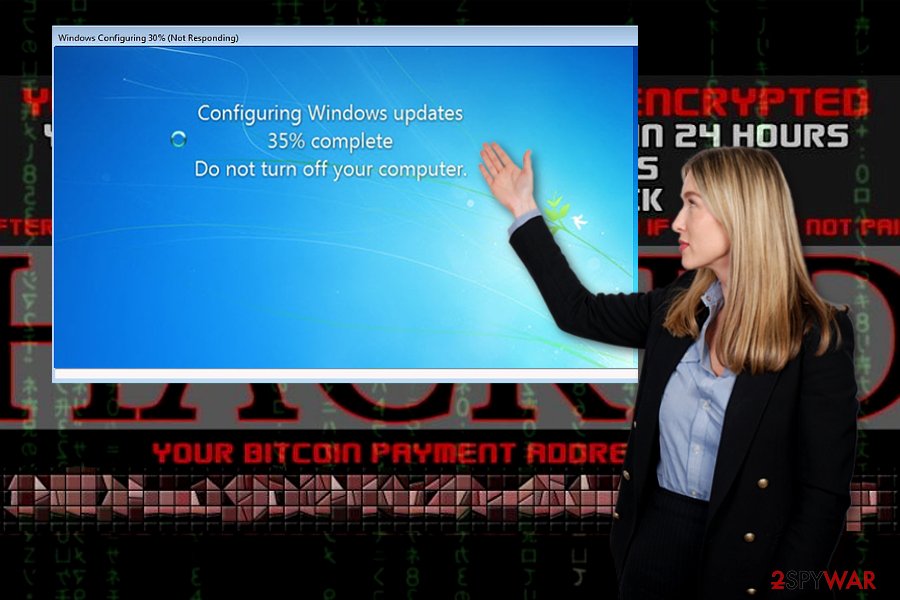
Ransomware revives its distribution campaign
Observing its specifications, it is likely to travel via malicious spam campaigns, corrupt ads or infected links like most infections in this category [6]. Potential victims receive this virus in their email as Word document, spreadsheet or PDF file. Unaware of the potential dangers, users download these files in hopes to find the promised invoice information, legal document or other supposedly important content.
As soon as such email attachments are downloaded and opened, the malicious script does its job and downloads HACKED crypto-malware on the computer. Of course, data backups [7] are always a good solution and most of the time guarantees a successful file recovery in case the computer gets corrupted.
Ways to eradicate HACKED malware
Discussing HACKED removal options, unfortunately, few of them remain. Unless you are an IT expert, manual elimination might be futile as the infection roots in the system. Update your security application and run the scan. You can also try SpyHunter 5Combo Cleaner or Malwarebytes, if you have no options. In case you cannot exit the lock screen (press ALT+F4) or launch the tool, restart the system in Safe Mode.
Then, you should be able to remove HACKED virus and its components. Note that data recovery would be effective only when you eliminate the crypto-virus entirely. Do not forget about virus damage that can trigger issues with the machine. Run FortectIntego and repair affected files and functions.
Getting rid of HACKED virus. Follow these steps
Important steps to take before you begin malware removal
File encryption and ransomware infection are two independent processes (although the latter would not be possible without the former). However, it is important to understand that malware performs various changes within a Windows operating system, fundamentally changing the way it works.
IMPORTANT for those without backups! →
If you attempt to use security or recovery software immediately, you might permanently damage your files, and even a working decryptor then would not be able to save them.
Before you proceed with the removal instructions below, you should copy the encrypted files onto a separate medium, such as USB flash drive or SSD, and then disconnect them from your computer. Encrypted data does not hold any malicious code, so it is safe to transfer to other devices.
The instructions below might initially seem overwhelming and complicated, but they are not difficult to understand as long as you follow each step in the appropriate order. This comprehensive free guide will help you to handle the malware removal and data recovery process correctly.
If you have any questions, comments, or are having troubles with following the instructions, please do not hesitate to contact us via the Ask Us section.
IMPORTANT! →
It is vital to eliminate malware infection from the computer fully before starting the data recovery process, otherwise ransomware might re-encrypt retrieved files from backups repeatedly.
Scan your system with anti-malware
If you are a victim of ransomware, you should employ anti-malware software for its removal. Some ransomware can self-destruct after the file encryption process is finished. Even in such cases, malware might leave various data-stealing modules or could operate in conjunction with other malicious programs on your device.
SpyHunter 5Combo Cleaner or Malwarebytes can detect and eliminate all ransomware-related files, additional modules, along with other viruses that could be hiding on your system. The security software is really easy to use and does not require any prior IT knowledge to succeed in the malware removal process.
Repair damaged system components
Once a computer is infected with malware, its system is changed to operate differently. For example, an infection can alter the Windows registry database, damage vital bootup and other sections, delete or corrupt DLL files, etc. Once a system file is damaged by malware, antivirus software is not capable of doing anything about it, leaving it just the way it is. Consequently, users might experience performance, stability, and usability issues, to the point where a full Windows reinstall is required.
Therefore, we highly recommend using a one-of-a-kind, patented technology of FortectIntego repair. Not only can it fix virus damage after the infection, but it is also capable of removing malware that has already broken into the system thanks to several engines used by the program. Besides, the application is also capable of fixing various Windows-related issues that are not caused by malware infections, for example, Blue Screen errors, freezes, registry errors, damaged DLLs, etc.
- Download the application by clicking on the link above
- Click on the ReimageRepair.exe
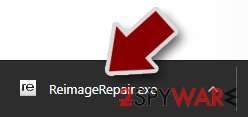
- If User Account Control (UAC) shows up, select Yes
- Press Install and wait till the program finishes the installation process
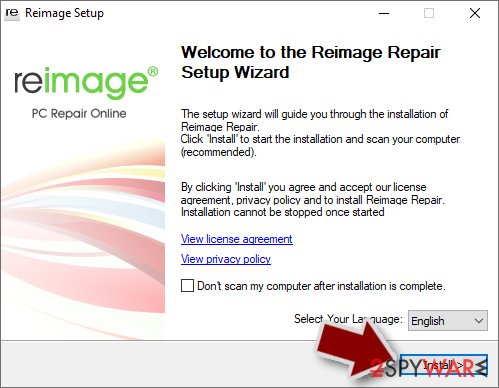
- The analysis of your machine will begin immediately
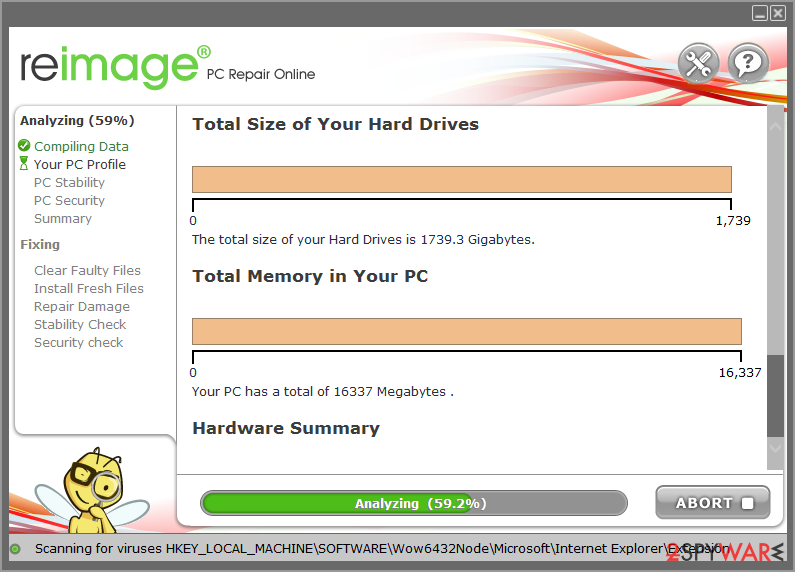
- Once complete, check the results – they will be listed in the Summary
- You can now click on each of the issues and fix them manually
- If you see many problems that you find difficult to fix, we recommend you purchase the license and fix them automatically.
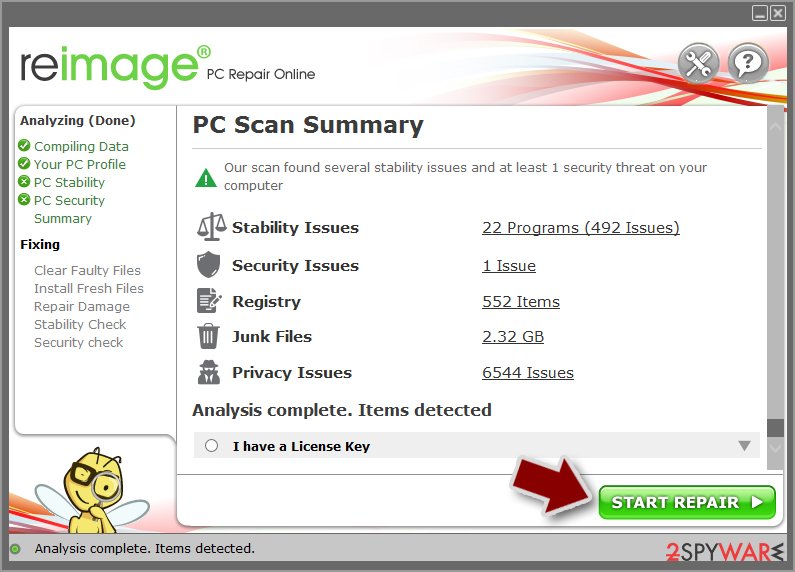
By employing FortectIntego, you would not have to worry about future computer issues, as most of them could be fixed quickly by performing a full system scan at any time. Most importantly, you could avoid the tedious process of Windows reinstallation in case things go very wrong due to one reason or another.
Restore files using data recovery software
Since many users do not prepare proper data backups prior to being attacked by ransomware, they might often lose access to their files permanently. Paying criminals is also very risky, as they might not fulfill the promises and never send back the required decryption tool.
While this might sound terrible, not all is lost – data recovery software might be able to help you in some situations (it highly depends on the encryption algorithm used, whether ransomware managed to complete the programmed tasks, etc.). Since there are thousands of different ransomware strains, it is immediately impossible to tell whether third-party software will work for you.
Therefore, we suggest trying regardless of which ransomware attacked your computer. Before you begin, several pointers are important while dealing with this situation:
- Since the encrypted data on your computer might permanently be damaged by security or data recovery software, you should first make backups of it – use a USB flash drive or another storage.
- Only attempt to recover your files using this method after you perform a scan with anti-malware software.
Install data recovery software
- Download Data Recovery Pro.
- Double-click the installer to launch it.

- Follow on-screen instructions to install the software.
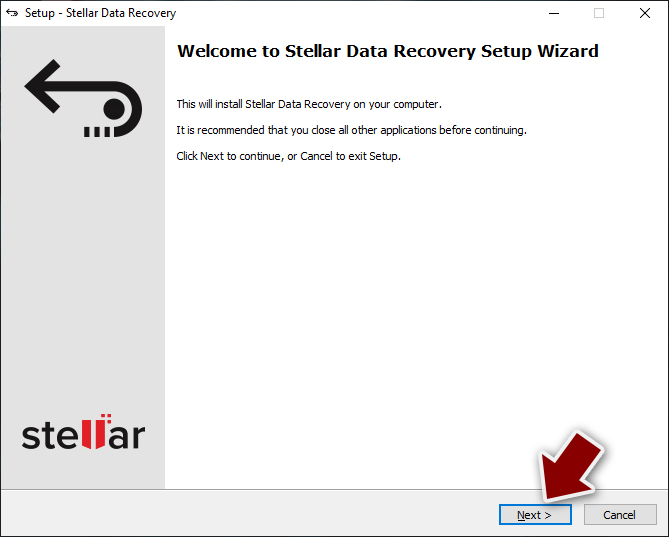
- As soon as you press Finish, you can use the app.
- Select Everything or pick individual folders where you want the files to be recovered from.
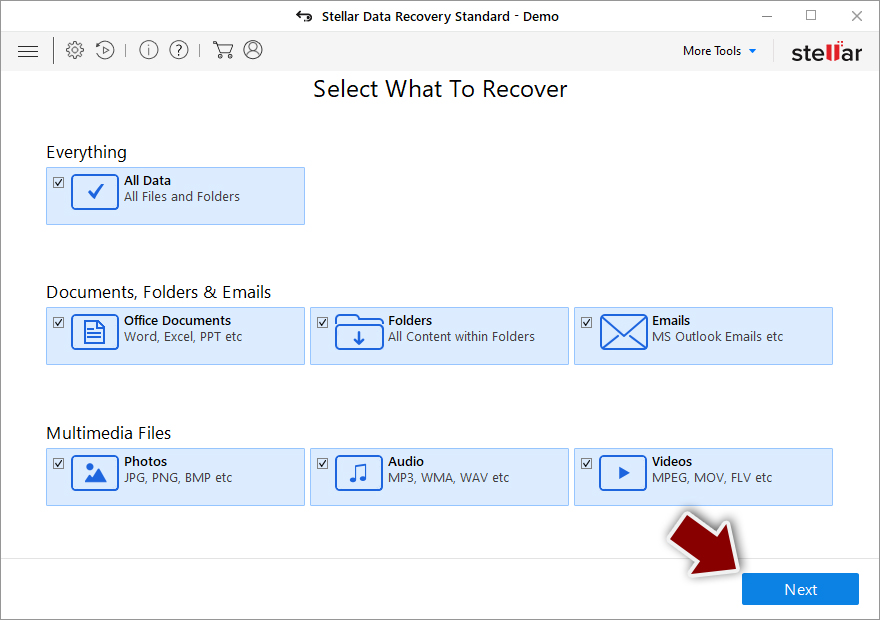
- Press Next.
- At the bottom, enable Deep scan and pick which Disks you want to be scanned.
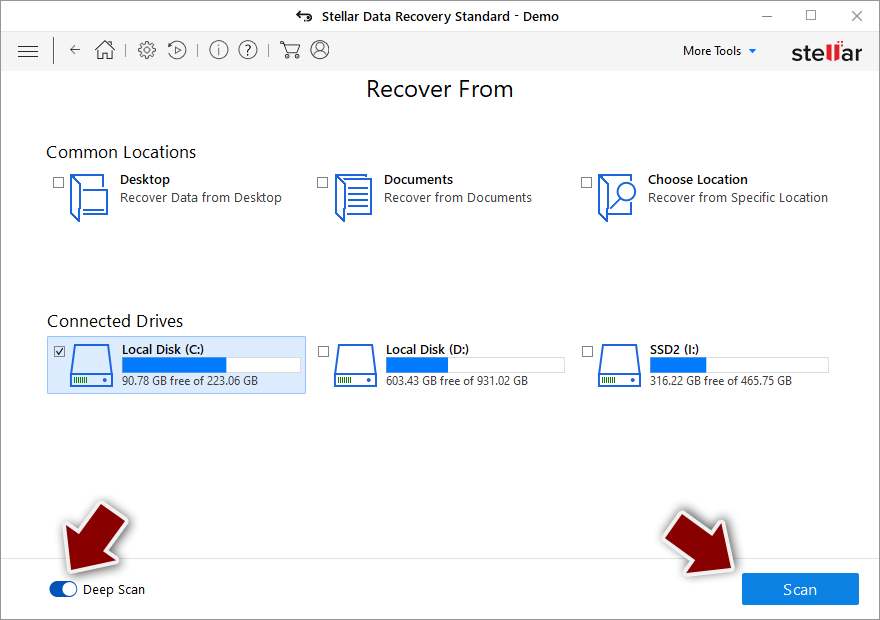
- Press Scan and wait till it is complete.
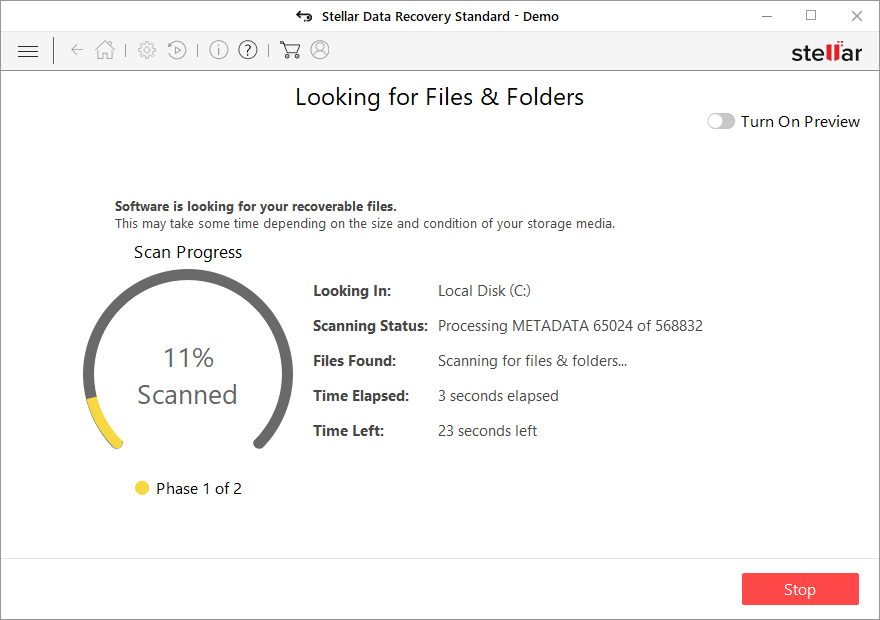
- You can now pick which folders/files to recover – don't forget you also have the option to search by the file name!
- Press Recover to retrieve your files.
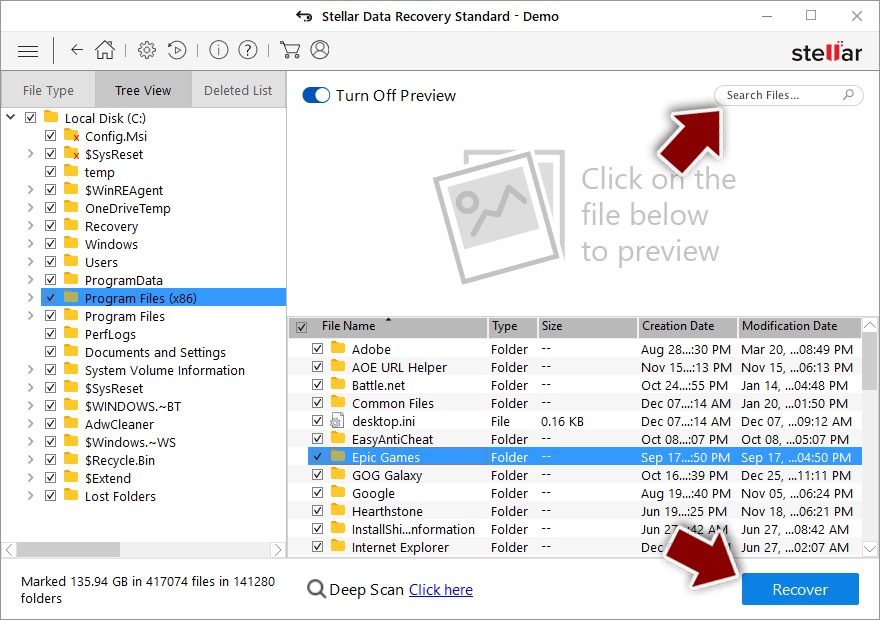
Find a working decryptor for your files
File encryption is a process that is similar to applying a password to a particular file or folder. However, from a technical point of view, encryption is fundamentally different due to its complexity. By using encryption, threat actors use a unique set of alphanumeric characters as a password that can not easily be deciphered if the process is performed correctly.
There are several algorithms that can be used to lock data (whether for good or bad reasons); for example, AES uses the symmetric method of encryption, meaning that the key used to lock and unlock files is the same. Unfortunately, it is only accessible to the attackers who hold it on a remote server – they ask for a payment in exchange for it. This simple principle is what allows ransomware authors to prosper in this illegal business.
While many high-profile ransomware strains such as Djvu or Dharma use immaculate encryption methods, there are plenty of failures that can be observed within the code of some novice malware developers. For example, the keys could be stored locally, which would allow users to regain access to their files without paying. In some cases, ransomware does not even encrypt files due to bugs, although victims might believe the opposite due to the ransom note that shows up right after the infection and data encryption is completed.
Therefore, regardless of which crypto-malware affects your files, you should try to find the relevant decryptor if such exists. Security researchers are in a constant battle against cybercriminals. In some cases, they manage to create a working decryption tool that would allow victims to recover files for free.
Once you have identified which ransomware you are affected by, you should check the following links for a decryptor:
- No More Ransom Project
- Free Ransomware Decryptors by Kaspersky
- Free Ransomware Decryption Tools from Emsisoft
- Avast decryptors
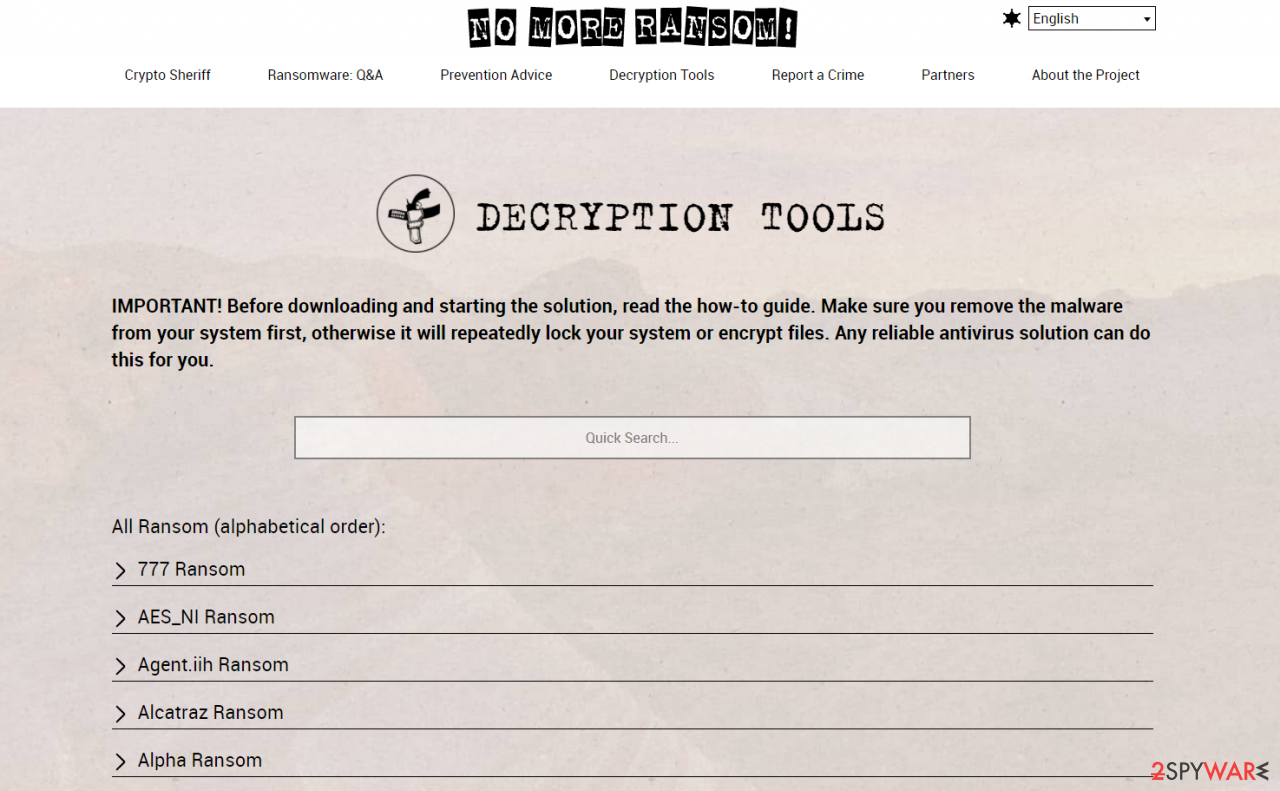
If you can't find a decryptor that works for you, you should try the alternative methods we list below. Additionally, it is worth mentioning that it sometimes takes years for a working decryption tool to be developed, so there are always hopes for the future.
Create data backups to avoid file loss in the future
One of the many countermeasures for home users against ransomware is data backups. Even if your Windows get corrupted, you can reinstall everything from scratch and retrieve files from backups with minimal losses overall. Most importantly, you would not have to pay cybercriminals and risk your money as well.
Therefore, if you have already dealt with a ransomware attack, we strongly advise you to prepare backups for future use. There are two options available to you:
- Backup on a physical external drive, such as a USB flash drive or external HDD.
- Use cloud storage services.
The first method is not that convenient, however, as backups need to constantly be updated manually – although it is very reliable. Therefore, we highly advise choosing cloud storage instead – it is easy to set up and efficient to sustain. The problem with it is that storage space is limited unless you want to pay for the subscription.
Using Microsoft OneDrive
OneDrive is a built-in tool that comes with every modern Windows version. By default, you get 5 GB of storage that you can use for free. You can increase that storage space, but for a price. Here's how to setup backups for OneDrive:
- Click on the OneDrive icon within your system tray.
- Select Help & Settings > Settings.
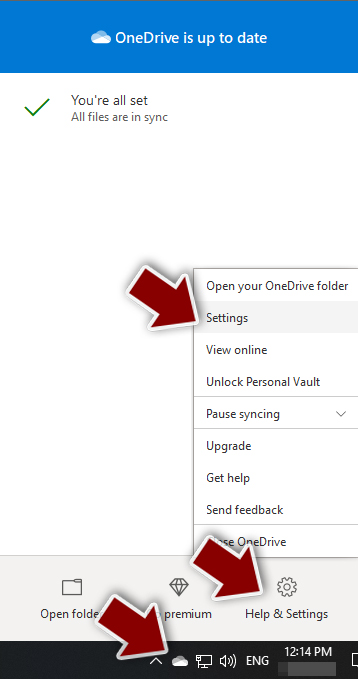
- If you don't see your email under the Account tab, you should click Add an account and proceed with the on-screen instructions to set yourself up.
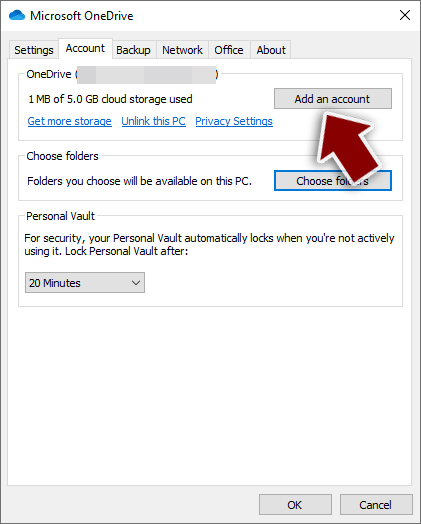
- Once done, move to the Backup tab and click Manage backup.
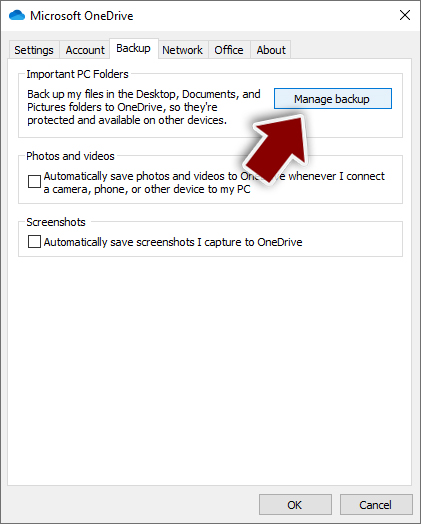
- Select Desktop, Documents, and Pictures, or a combination of whichever folders you want to backup.
- Press Start backup.
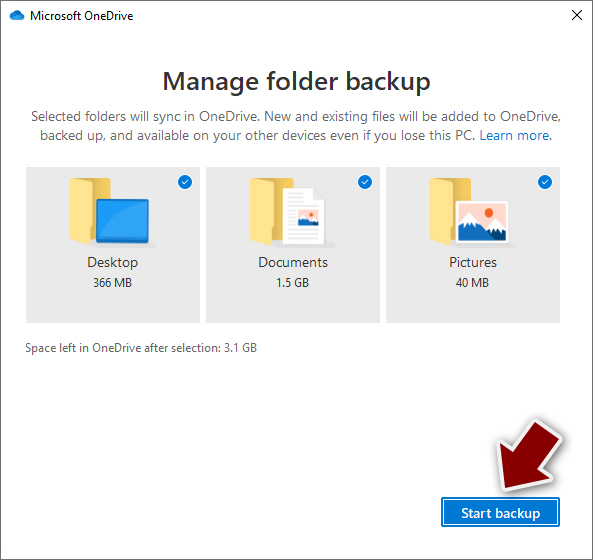
After this, all the files that are imported into the above-mentioned folders will be automatically backed for you. If you want to add other folders or files, you have to do that manually. For that, open File Explorer by pressing Win + E on your keyboard, and then click on the OneDrive icon. You should drag and drop folders you want to backup (or you can use Copy/Paste as well).
Using Google Drive
Google Drive is another great solution for free backups. The good news is that you get as much as 15GB for free by choosing this storage. There are also paid versions available, with significantly more storage to choose from.
You can access Google Drive via the web browser or use a desktop app you can download on the official website. If you want your files to be synced automatically, you will have to download the app, however.
- Download the Google Drive app installer and click on it.

- Wait a few seconds for it to be installed.
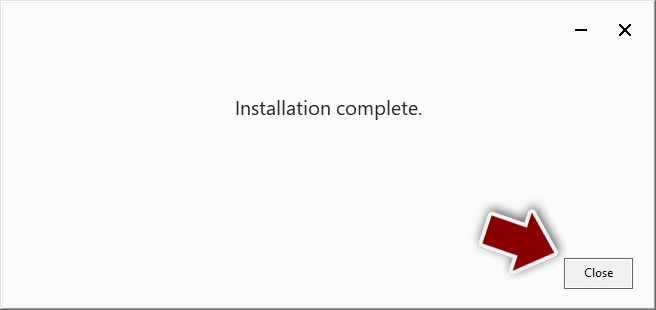
- Now click the arrow within your system tray – you should see Google Drive icon there, click it once.
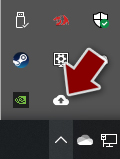
- Click Get Started.
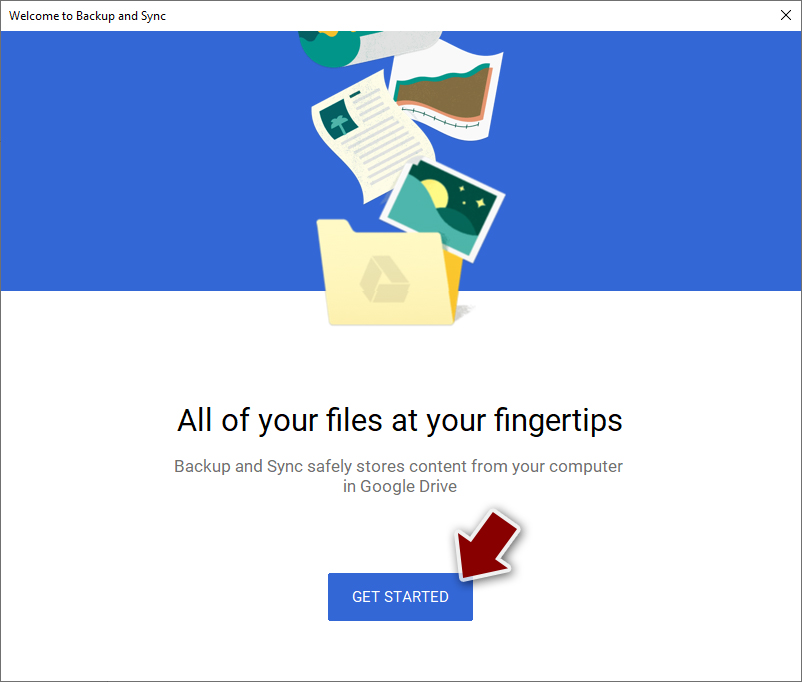
- Enter all the required information – your email/phone, and password.
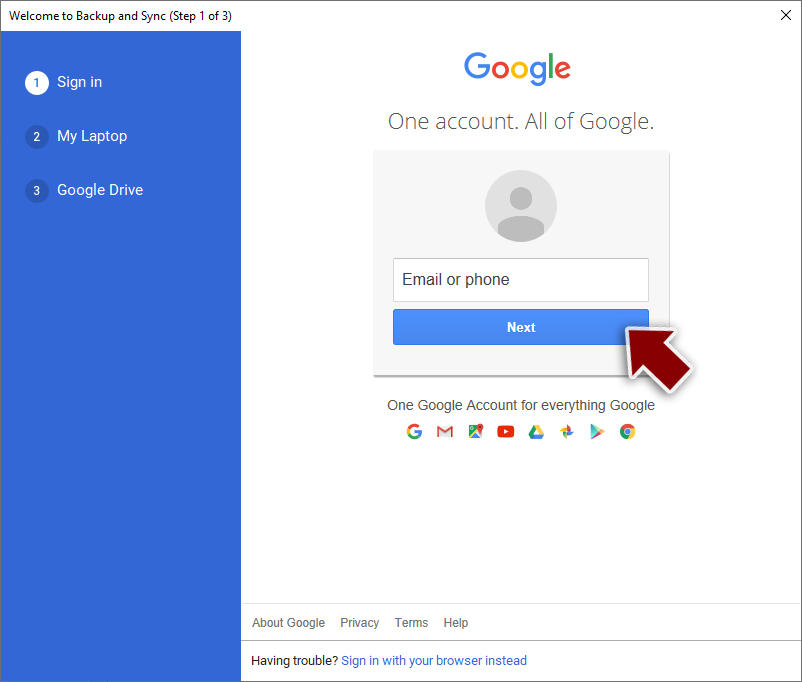
- Now pick what you want to sync and backup. You can click on Choose Folder to add additional folders to the list.
- Once done, pick Next.
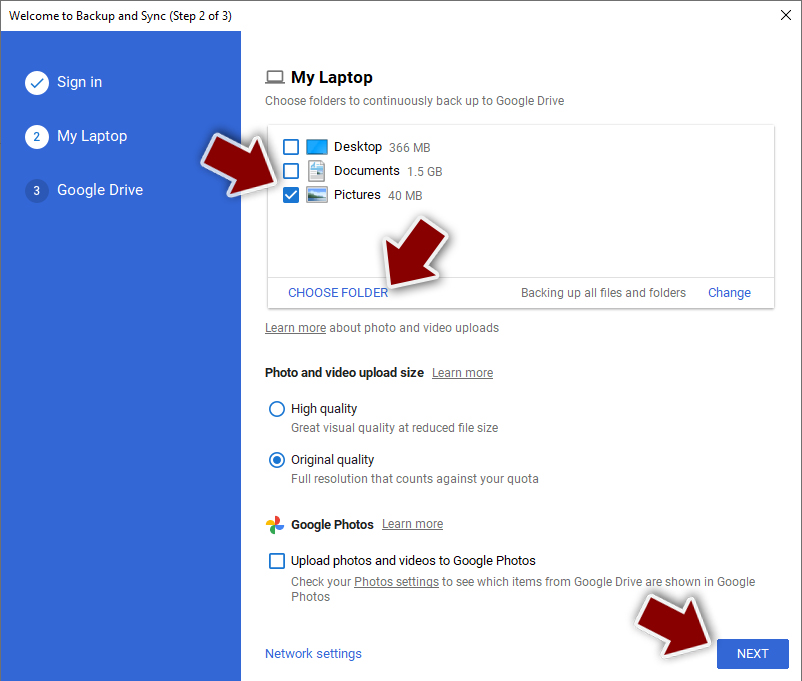
- Now you can select to sync items to be visible on your computer.
- Finally, press Start and wait till the sync is complete. Your files are now being backed up.
Report the incident to your local authorities
Ransomware is a huge business that is highly illegal, and authorities are very involved in catching malware operators. To have increased chances of identifying the culprits, the agencies need information. Therefore, by reporting the crime, you could help with stopping the cybercriminal activities and catching the threat actors. Make sure you include all the possible details, including how did you notice the attack, when it happened, etc. Additionally, providing documents such as ransom notes, examples of encrypted files, or malware executables would also be beneficial.
Law enforcement agencies typically deal with online fraud and cybercrime, although it depends on where you live. Here is the list of local authority groups that handle incidents like ransomware attacks, sorted by country:
- USA – Internet Crime Complaint Center IC3
- United Kingdom – ActionFraud
- Canada – Canadian Anti-Fraud Centre
- Australia – ScamWatch
- New Zealand – ConsumerProtection
- Germany – Polizei
- France – Ministère de l'Intérieur
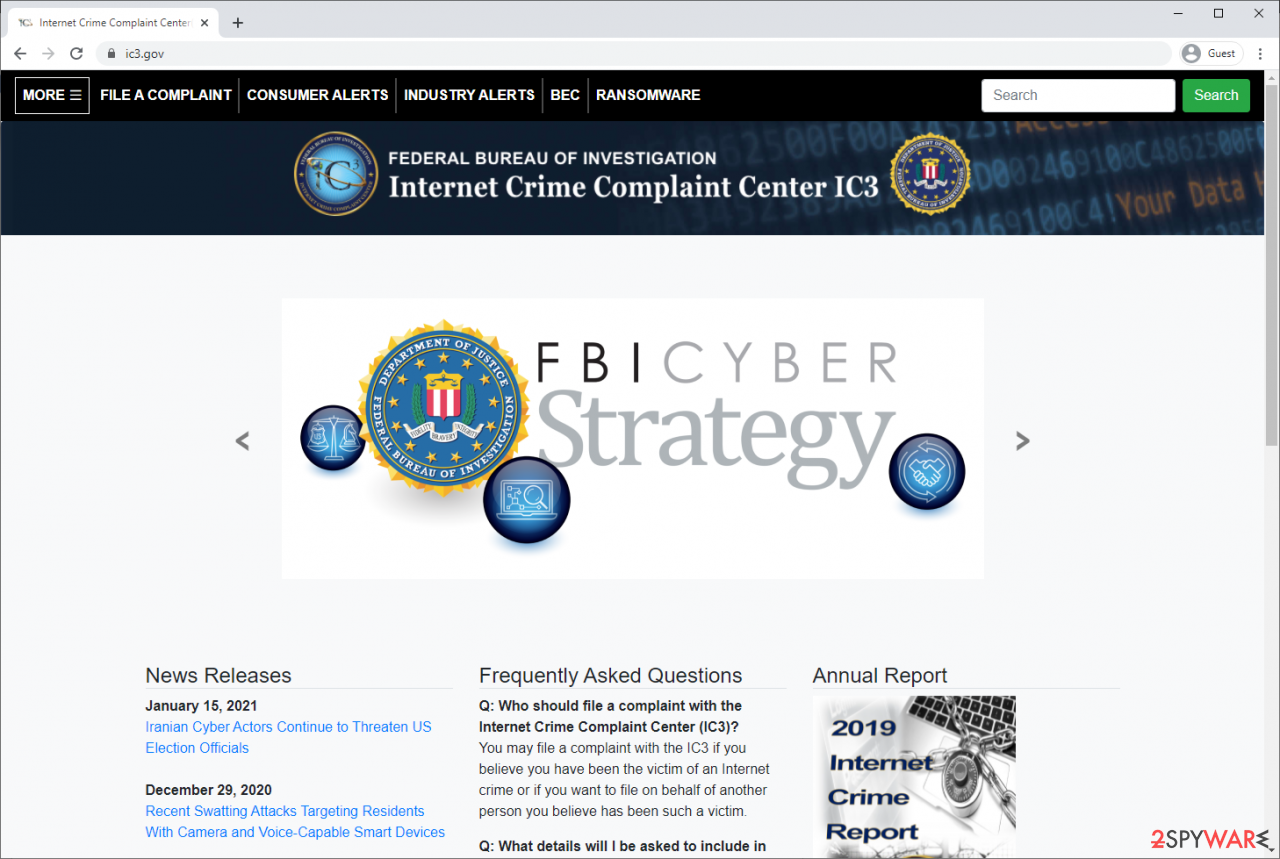
If your country is not listed above, you should contact the local police department or communications center.
Manual removal using Safe Mode
Important! →
Manual removal guide might be too complicated for regular computer users. It requires advanced IT knowledge to be performed correctly (if vital system files are removed or damaged, it might result in full Windows compromise), and it also might take hours to complete. Therefore, we highly advise using the automatic method provided above instead.
Step 1. Access Safe Mode with Networking
Manual malware removal should be best performed in the Safe Mode environment.
Windows 7 / Vista / XP
- Click Start > Shutdown > Restart > OK.
- When your computer becomes active, start pressing F8 button (if that does not work, try F2, F12, Del, etc. – it all depends on your motherboard model) multiple times until you see the Advanced Boot Options window.
- Select Safe Mode with Networking from the list.

Windows 10 / Windows 8
- Right-click on Start button and select Settings.

- Scroll down to pick Update & Security.

- On the left side of the window, pick Recovery.
- Now scroll down to find Advanced Startup section.
- Click Restart now.

- Select Troubleshoot.

- Go to Advanced options.

- Select Startup Settings.

- Press Restart.
- Now press 5 or click 5) Enable Safe Mode with Networking.

Step 2. Shut down suspicious processes
Windows Task Manager is a useful tool that shows all the processes running in the background. If malware is running a process, you need to shut it down:
- Press Ctrl + Shift + Esc on your keyboard to open Windows Task Manager.
- Click on More details.

- Scroll down to Background processes section, and look for anything suspicious.
- Right-click and select Open file location.

- Go back to the process, right-click and pick End Task.

- Delete the contents of the malicious folder.
Step 3. Check program Startup
- Press Ctrl + Shift + Esc on your keyboard to open Windows Task Manager.
- Go to Startup tab.
- Right-click on the suspicious program and pick Disable.

Step 4. Delete virus files
Malware-related files can be found in various places within your computer. Here are instructions that could help you find them:
- Type in Disk Cleanup in Windows search and press Enter.

- Select the drive you want to clean (C: is your main drive by default and is likely to be the one that has malicious files in).
- Scroll through the Files to delete list and select the following:
Temporary Internet Files
Downloads
Recycle Bin
Temporary files - Pick Clean up system files.

- You can also look for other malicious files hidden in the following folders (type these entries in Windows Search and press Enter):
%AppData%
%LocalAppData%
%ProgramData%
%WinDir%
After you are finished, reboot the PC in normal mode.
Finally, you should always think about the protection of crypto-ransomwares. In order to protect your computer from HACKED and other ransomwares, use a reputable anti-spyware, such as FortectIntego, SpyHunter 5Combo Cleaner or Malwarebytes
How to prevent from getting ransomware
Choose a proper web browser and improve your safety with a VPN tool
Online spying has got momentum in recent years and people are getting more and more interested in how to protect their privacy online. One of the basic means to add a layer of security – choose the most private and secure web browser. Although web browsers can't grant full privacy protection and security, some of them are much better at sandboxing, HTTPS upgrading, active content blocking, tracking blocking, phishing protection, and similar privacy-oriented features. However, if you want true anonymity, we suggest you employ a powerful Private Internet Access VPN – it can encrypt all the traffic that comes and goes out of your computer, preventing tracking completely.
Lost your files? Use data recovery software
While some files located on any computer are replaceable or useless, others can be extremely valuable. Family photos, work documents, school projects – these are types of files that we don't want to lose. Unfortunately, there are many ways how unexpected data loss can occur: power cuts, Blue Screen of Death errors, hardware failures, crypto-malware attack, or even accidental deletion.
To ensure that all the files remain intact, you should prepare regular data backups. You can choose cloud-based or physical copies you could restore from later in case of a disaster. If your backups were lost as well or you never bothered to prepare any, Data Recovery Pro can be your only hope to retrieve your invaluable files.
- ^ Eliminate computer threats. Senzavirus. Security and spyware news.
- ^ Lawrence Abrams. Hacked Ransomware. Appends .hacked and includes ransom notes in Italian, English, Spanish, and Turkish. Pretends to be a windows update.. Twitter. Online Source for Viral News.
- ^ Guy McDowell. How to Automate Mundane Tasks with AutoIt. Makeuseof.com technology simplified.
- ^ Michael Gillespie. New extensions. Michael Gillespie twitter post.
- ^ HACKED ransomware. VirusTotal. Free malicious URL analysis service.
- ^ Andra Zaharia. Ransomware Distribution: How One Infection Can Go Network-Wide. Heimdal security blog.
- ^ Backup of Data & Files – Why it is Important?. Bullguard security center.
